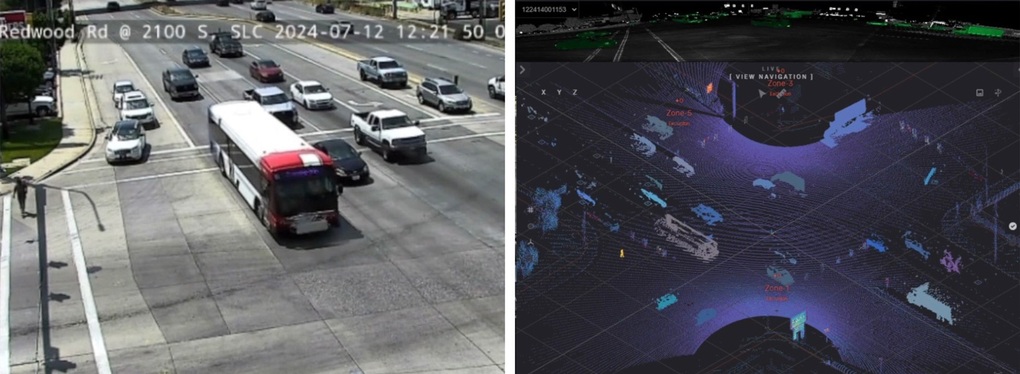
LiDar, short for Light Detection and Ranging, is a technology that uses laser beams to map three-dimensional models of space. By utilizing light, LiDar technology allows for faster and more accurate mapping of space compared to systems that use sound or radar.
Currently, this technology is widely used in luxury vehicles such as the Mercedes-Benz S-Class, serving features for driver assistance and autonomous driving. However, in the future, it could also contribute to increasing safety at intersections.

LiDar technology has the ability to detect objects faster and more accurately than systems using sound or radar (screenshot).
The Utah Department of Transportation (UDOT) has conducted a trial of equipping LiDar technology at 5 intersections in Salt Lake City to record the activities of pedestrians, cyclists, and traffic to gain a better understanding of reducing accident rates.
Instead of capturing only what happens at the red light line, as a simple camera can do, this system will map movements across the entire intersection.
This allows researchers to see patterns, such as identifying areas where near-collisions often occur or when and where pedestrians jaywalk, something that was previously not feasible.
The system can also record average speed and everything with 99.98% accuracy.
UDOT mentioned that the LiDar system can also help adjust traffic signal times more reasonably, for example, to give pedestrians more time to cross. However, what is truly intelligent is that it can be used to make important safety adjustments in real-time.
"Imagine someone crossing the street and they stumble, so they can't make it to the other side in time. We don't have to do anything manually, the system will automatically adjust the timing for them to cross safely," UDOT spokesman John Gleason explained on the Fox13 channel in the US.
UDOT has not disclosed the cost for the systems developed by Panasonic, but Fox13 reported that this technology costs between $30,000-40,000 USD.
Hãy là người đầu tiên bình luận!
Bình luận: